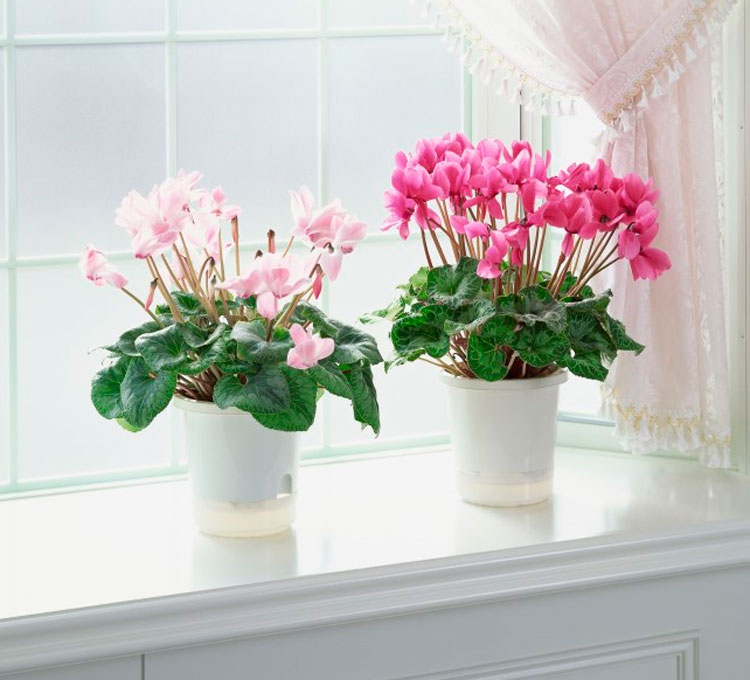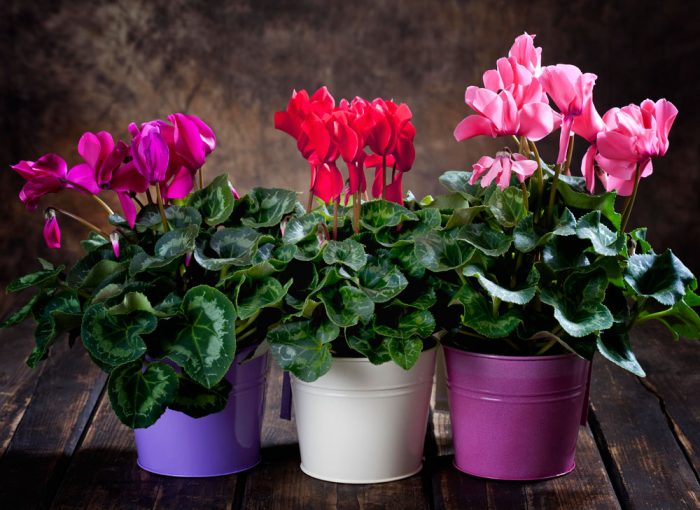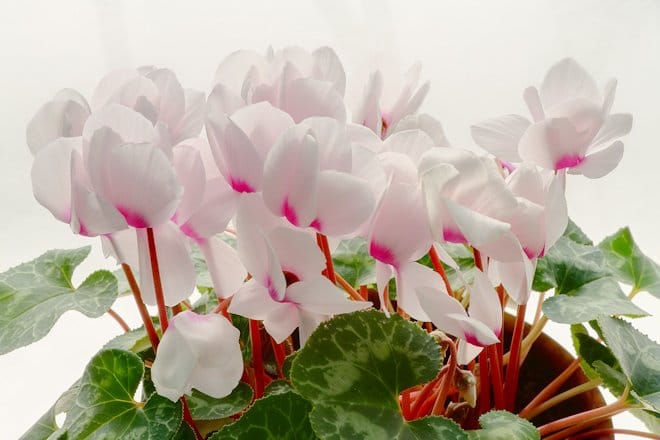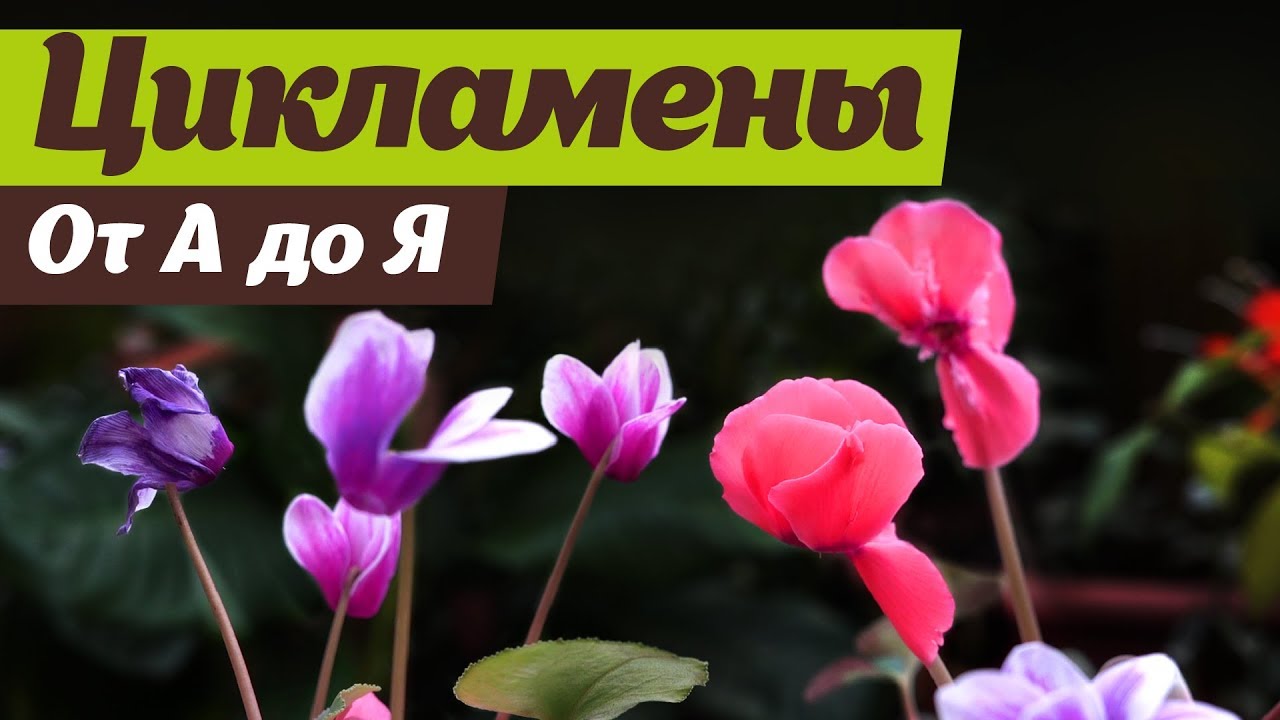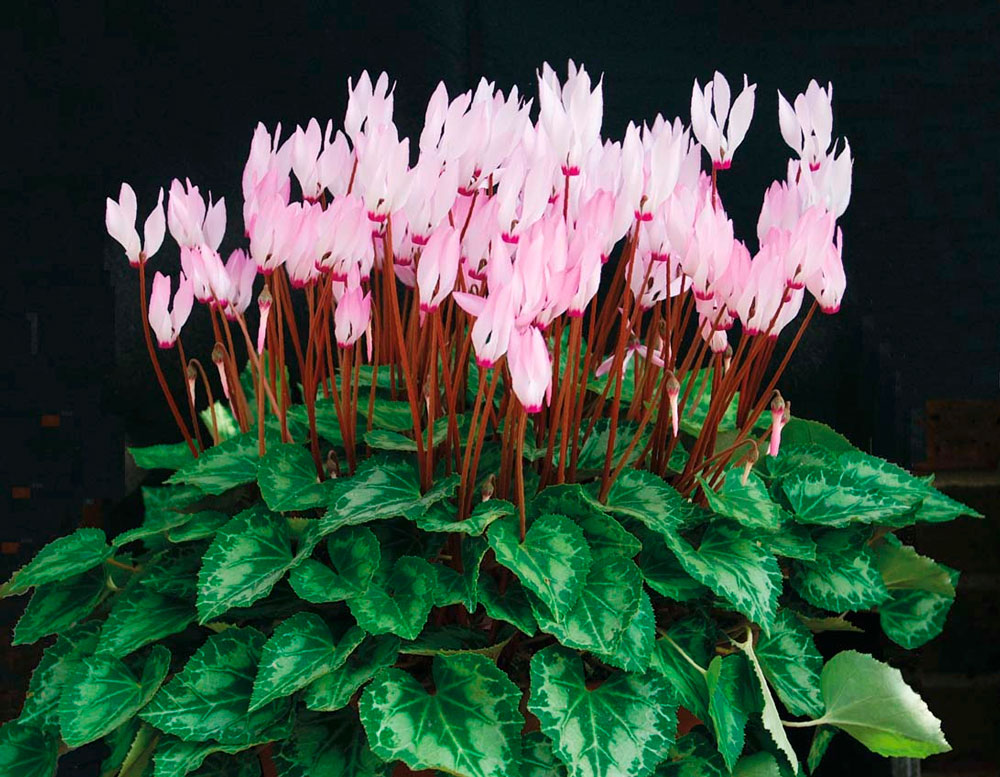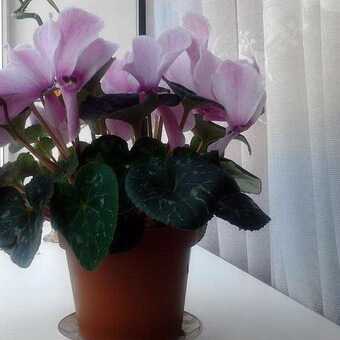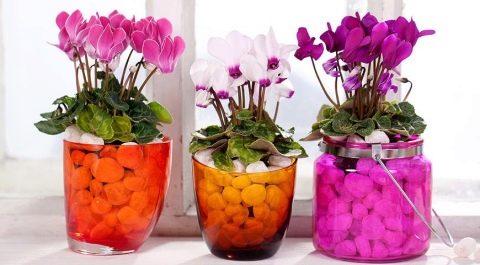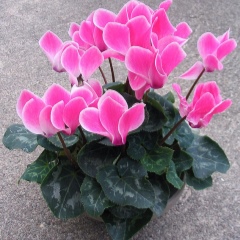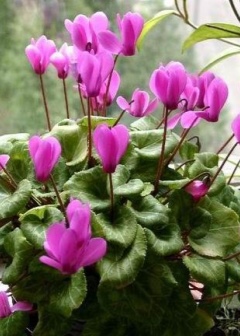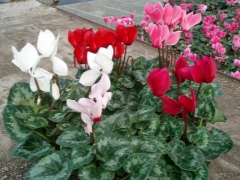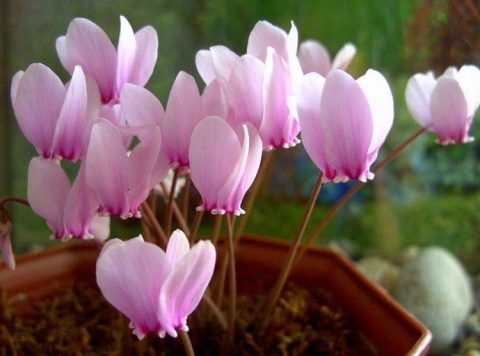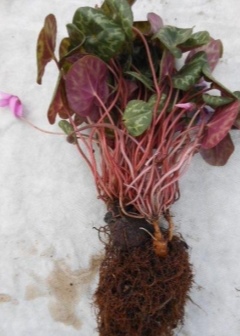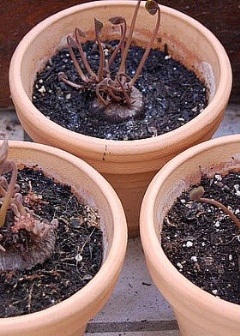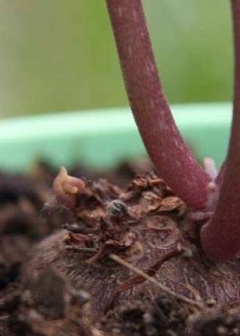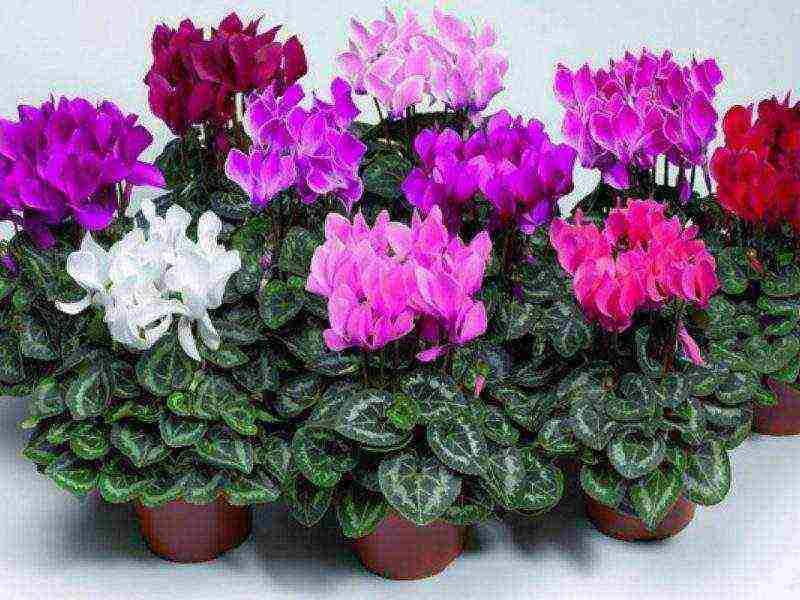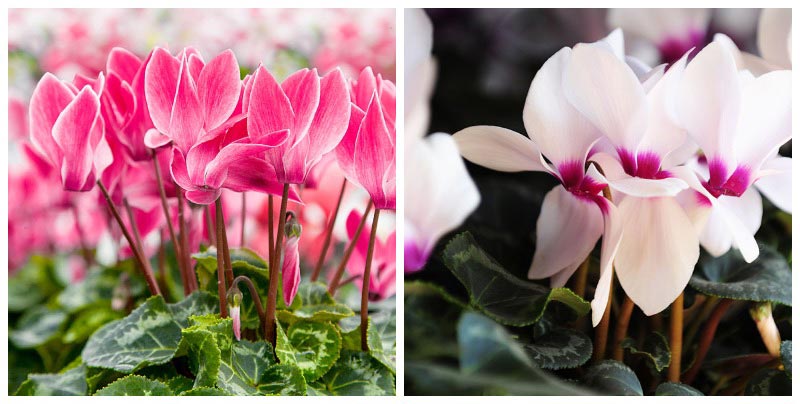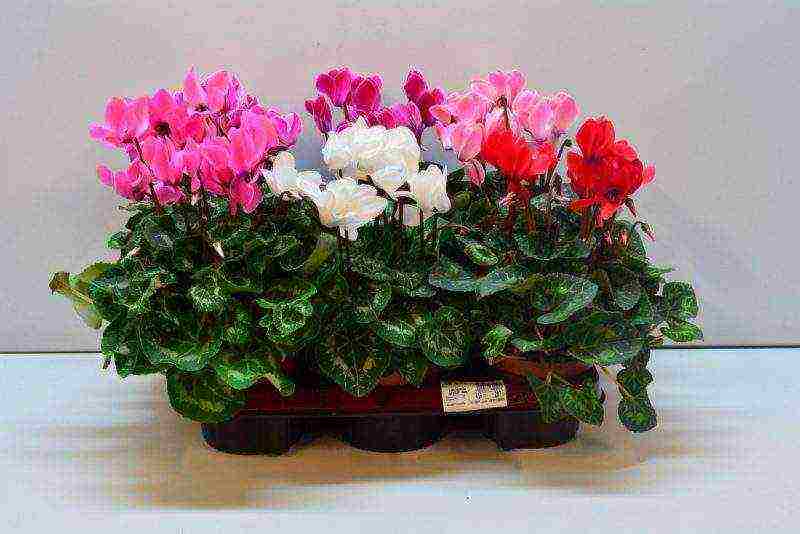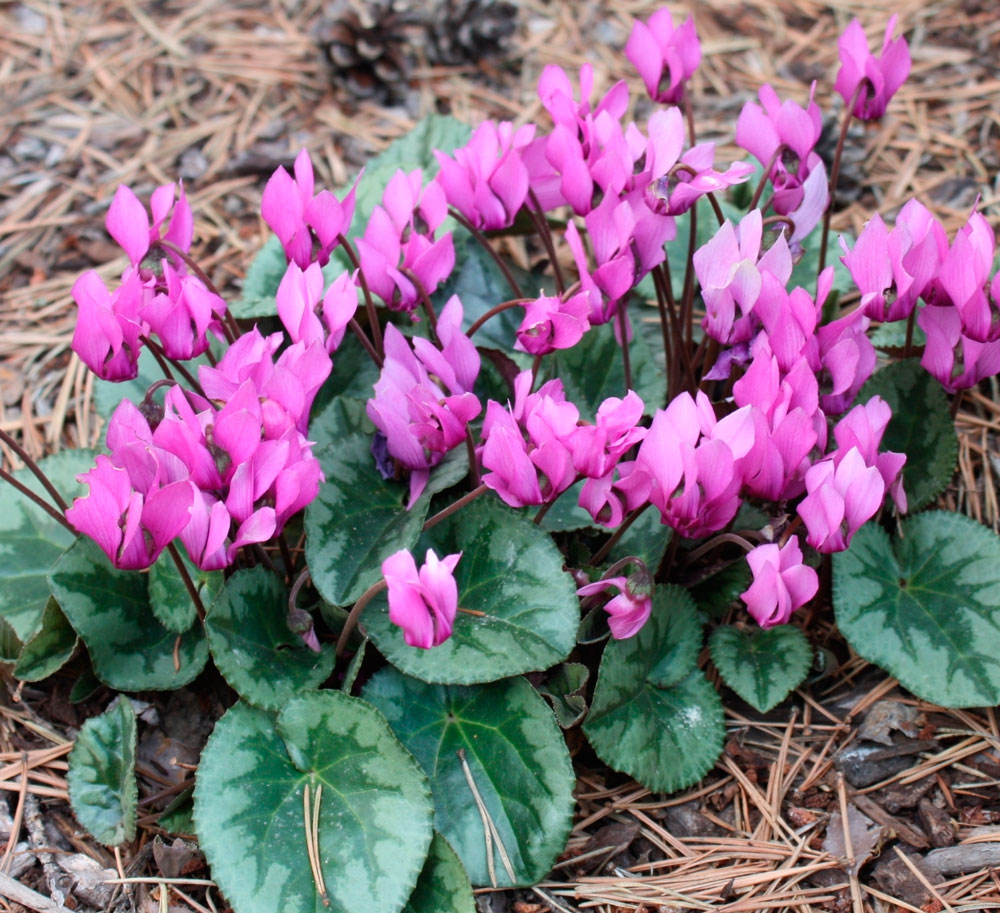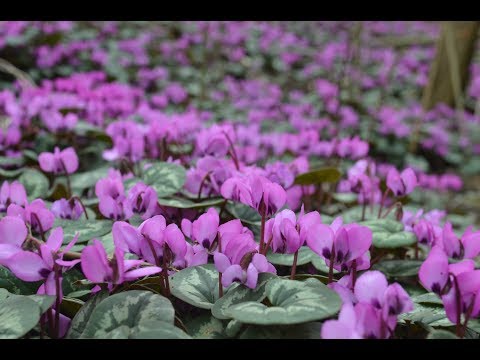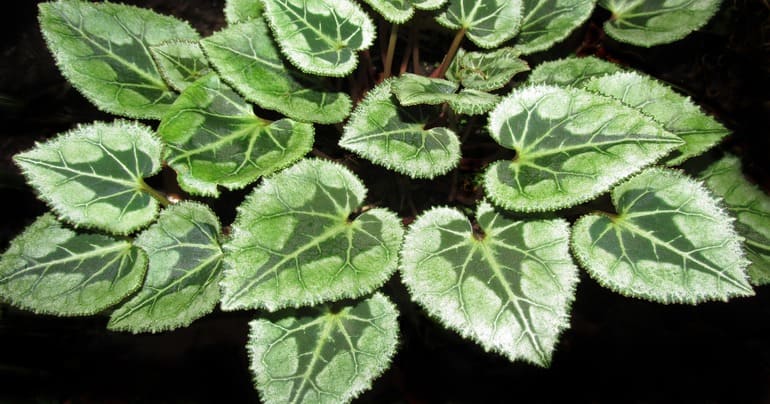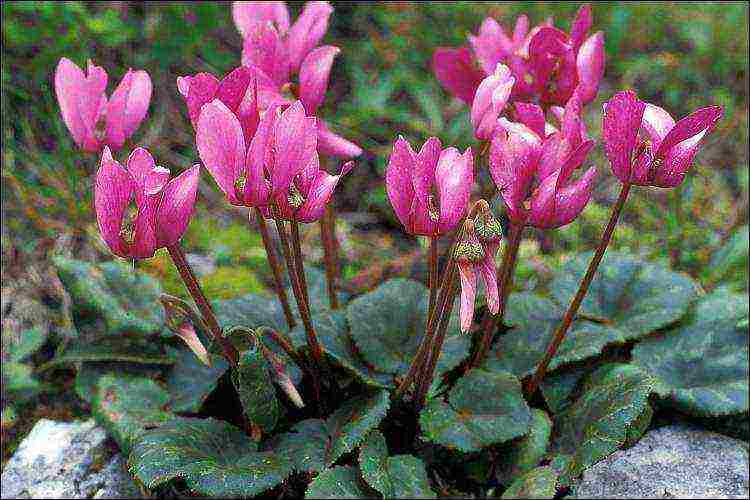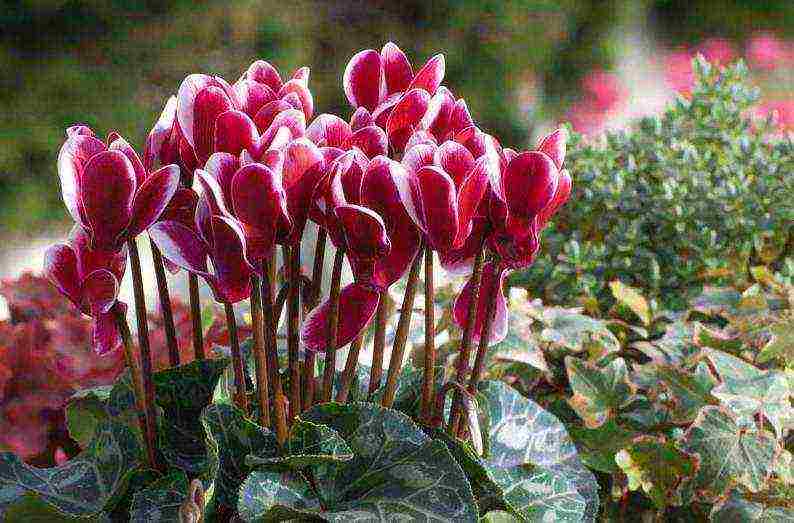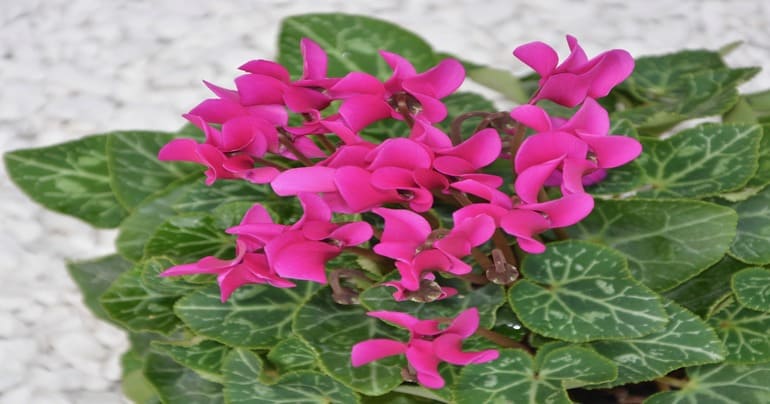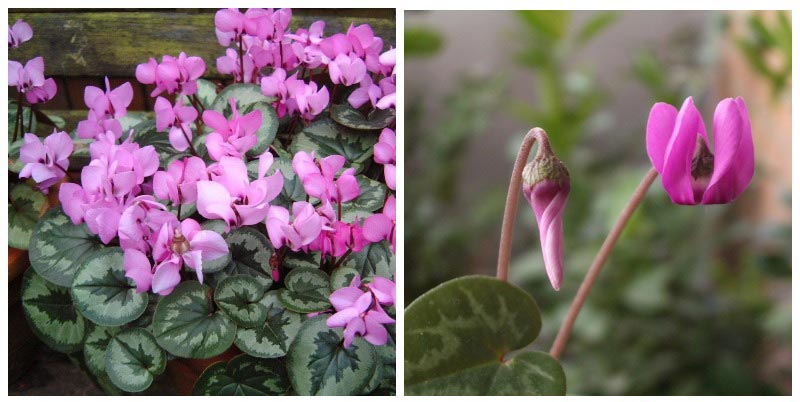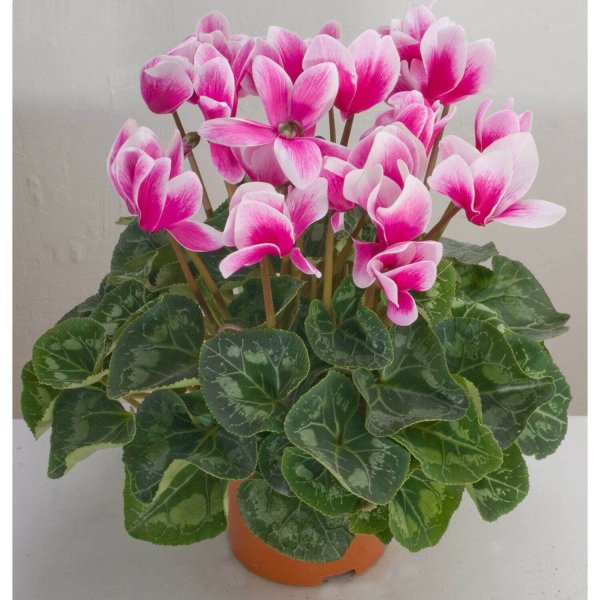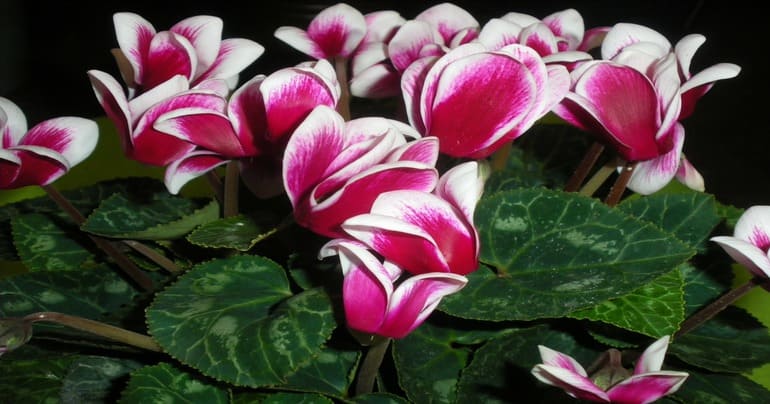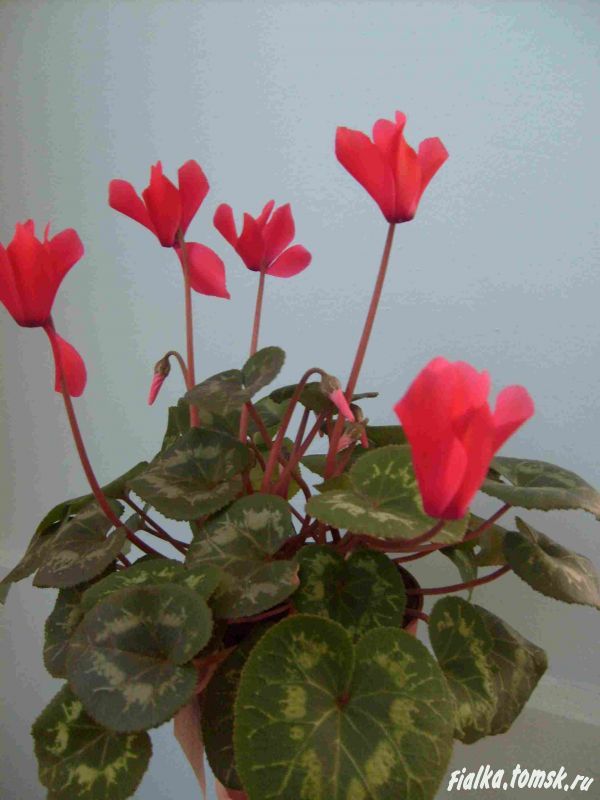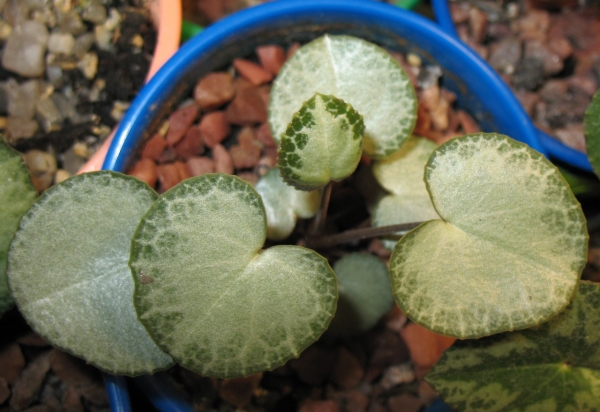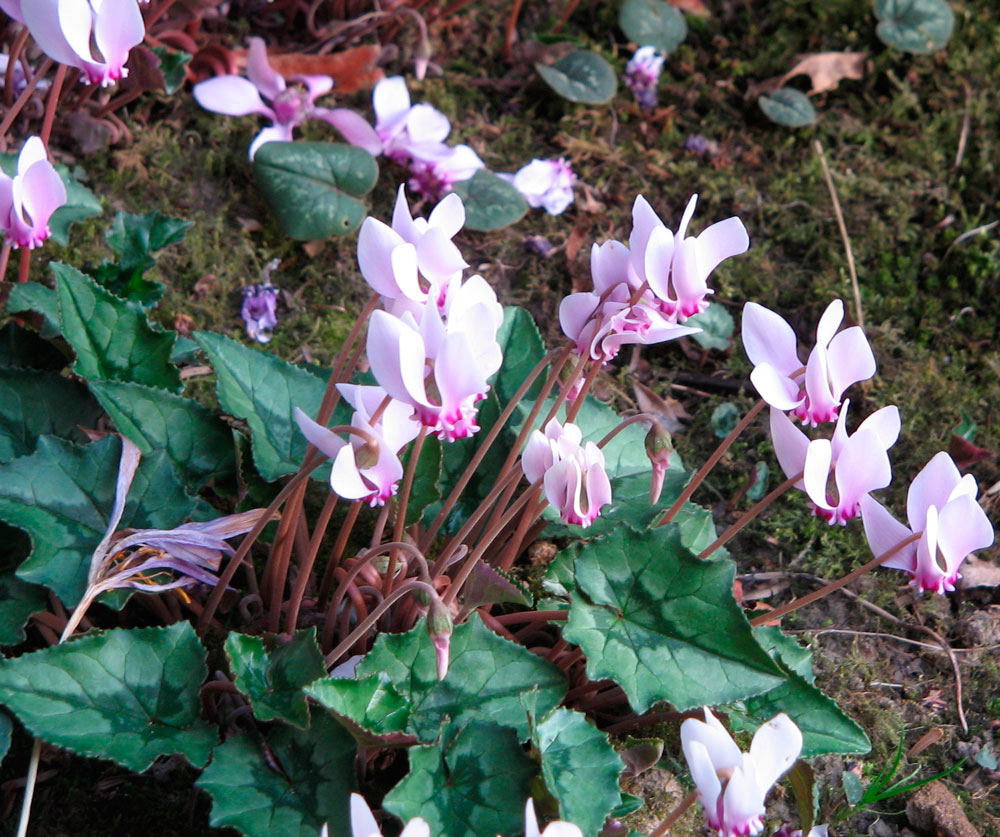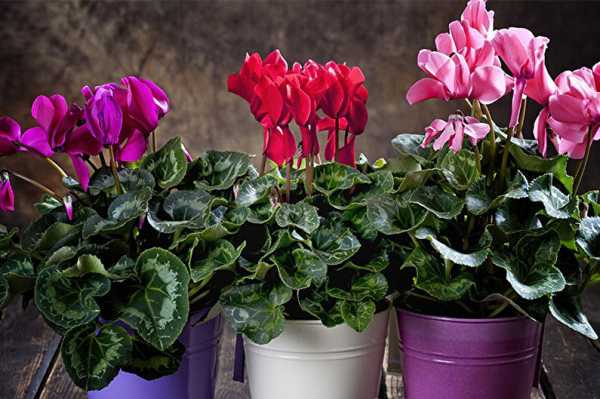Pests
Pests are another reason why flowers wither and leaves turn yellow in cyclamen. It is not easy to escape from them even at home, since when the room is ventilated, they can simply be blown in by the wind. Insects can also live on recently purchased plants if they have not been properly treated. Unfortunately, the susceptibility of cyclamen to pests is quite high. Consider the main ones - thrips, aphids, scale insects and spider mites.
Thrips
These insects are very small in size, with an elongated body and wings. It is difficult to notice them, since thrips are located on the underside of the leaf. Pests feed on plant sap, and rot appears in the affected areas over time.

Thrips are very small and move quickly, so fighting them can be quite challenging.
Insecticides will help get rid of thrips.
You can use the drug "Actellik", with a solution of which the flower is sprayed and covered with a plastic bag for a day. This will help keep pests on the plant. The treatment should be repeated after a week to consolidate the result.
Shield
This pest, like thrips, feeds on plant sap. Outwardly, it resembles a waxy speck. The insect is resistant to the effects of insecticides, since its body is reliably covered with a dense shell. In addition to yellowing of the leaves, it can be identified by the sticky secretions on the plant.
These insects are removed from the flower entirely by hand, after the affected plant has been rearranged from others. You need to use a regular toothbrush, dipping it in a soapy solution. Re-treatment after a week is required.
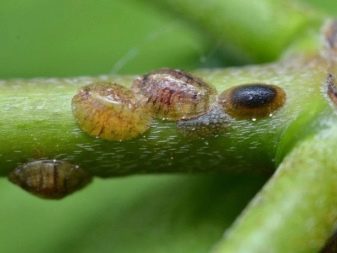
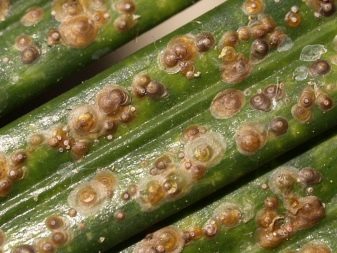
Mites
The cyclamen mite outwardly resembles a small spider, it can be easily seen on the plant during physical examination. Usually they hide among the foliage, as they do not like light. Too low humidity in the room contributes to the appearance of the pest.
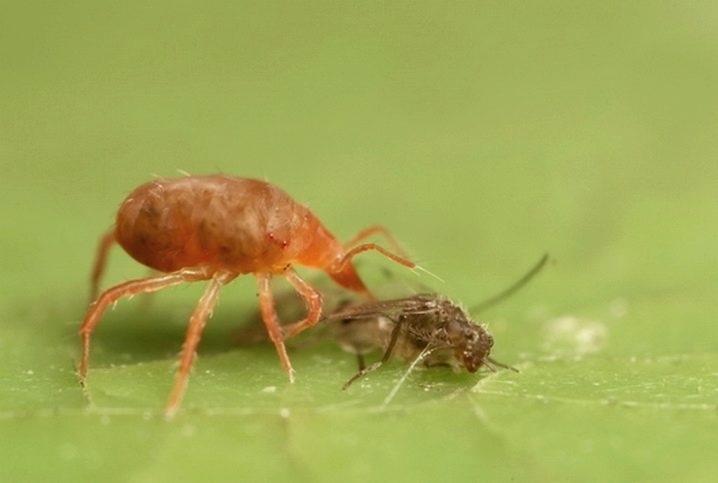
To cure cyclamen, first of all, it should be isolated from other plants. After that, the flower is sprayed with acaricide. Treatment alone will not be enough, as ticks are actively laying eggs that are not affected by drugs. You need to spray cyclamen 3-4 times with a break of 4-5 days
Particular attention should be paid to the crown. If you keep the room at normal humidity, mites will not appear.
Cyclamen is native to the Mediterranean and the Alps - it is so common there that called "pork bread"
... We call this exotic alpine violet
... Cyclamen is an ephemeroid, that is, it lives above the surface of the earth for only a few months a year, and sleeps the rest of the time. Although hybrid, cultivated varieties do not need much rest and can grow year-round.
Buying a plant
The purchase of cyclamen implies some nuances. If you miss important points in assessing the health of a plant and its appearance, then soon after purchase it will die. Even transplanting into new soil and treatment from diseases will not save the flower. After purchasing a cyclamen, it is necessary to provide special care at home and carry out a transplant in a timely manner.
How to choose what to look for
You can buy a flowering cyclamen, in the form of a tuber or a seedling. The selected specimen is first examined for damage. The leaves should be firm and dense. If plaque or any stains are visible on them, the purchase should be discarded. If the cyclamen is planted in a pot, then the tuber should rise by a third above the soil surface (by covering it with earth, the seller can hide the damage or the decay process that has begun).
When to transplant a purchased plant
Cyclamens are characterized by a period of adaptation to new conditions. A few days after purchase, the plant may lose its attractive appearance. This reaction is natural. There is no need to feed the flower for the first six months. Other rules of care must be fully implemented. It is possible to transplant cyclamen after purchase only after the end of the dormant period.
Where to get planting material
Seeds, tubers, saplings and flowering cyclamens can be purchased at flower shops or bazaars that sell related products. There is no significant difference in the place of purchase of the plant. The main point is the correct assessment of the quality of the product and the health of the flower.

In most cases, it becomes impossible to restore the appearance of an infected or withering plant.
Reproduction
If necessary, the alpine violet can be propagated in several ways, but the most popular are: seeds and tubers. The flower takes root perfectly and from the leaves. The type of breeding depends on the season.
Tubers
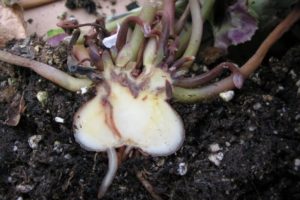 Only after a period of rest. This method can be used only when the flower “fell asleep”.
Only after a period of rest. This method can be used only when the flower “fell asleep”.
The tuber is removed from the pot, and divided into several parts, then they are dried and each part must be sprinkled with activated carbon powder. And then plant them in different containers for constant growth.
And here, the most important thing is to pay maximum attention to each part of the tuber. Before the first shoots appear, the plant may simply rot and die.
From seed
It will take a lot of time and effort. Seeds are obtained from the main plant, and especially for this, cyclamen is artificially pollinated by transferring pollen from one flower to another with a soft brush. The procedure should be done early in the morning and repeated several times. And to speed up the process, the primrose is additionally fertilized with potassium sulfide and superphosphate.
- If everything was done correctly, then seeds that are capable of reproduction will soon form. Sowing is best before flowering, in August. The seeds are poured completely with a sugar solution, the spoiled ones are discarded (these are those that surfaced), and then they are prepared for planting.
- The soil is chosen that is suitable for transplanting flowering plants. It is good to water the earth, then evenly distribute small primrose seeds over it and sprinkle with a thin layer of soil. Cover the container with a film - it will accelerate germination and create condensation. Until the first shoots appear, the temperature under the film should reach 19 - 21 degrees.
- From time to time, the container needs to be ventilated and sprayed from a spray bottle, and after 5 - 7 weeks shoots will appear. It's time to remove the film and provide the sprouts with constant care and attention.
- When the first 3 - 4 leaves grow on the trunk, the cyclamen must be dived, and after 10 - 13 months, after planting, it is transplanted into pots for permanent habitation.
Cyclamens - growing and care at home
It is possible to extend the flowering period of a culture by providing it with comfortable conditions. Persian cyclamen requires more thorough care than European specimens (alpine violet), so beginners should not purchase it
When keeping a plant, attention is paid to the following points:
- room temperature;
- soil quality;
- the degree of illumination of the room;
- the size of the pot.
Watering cyclamen
During the flowering period, the culture is moderately watered. The soil is moistened around the edges of the pot, trying to avoid liquid getting on the tubers and leaves. It is better if the feeding of the flower comes from the pallet. You can not pour liquid into the core of the cyclamen, because this can lead to its decay and death. It is advisable to use filtered or rainwater.
The temperature of the liquid used during irrigation should be 2-4 ° C below room temperature. Excess water is drained from the saucer after 1-2 hours.Cyclamens, the cultivation and care of which is not much different from other perennial indoor crops, require increased attention during the flowering period. After the tubers remain bare, the frequency of watering is reduced to once every 1.5-2 weeks.
Cyclamen underside
The plant reacts quickly to poor care: its leaves are deformed, turn yellow and dry. Another indicator of inadequate care is the lack of buds or their scarcity, poor growth of tubers. Insufficient feeding or the use of prohibited fertilizers, which contain nitrogen or chlorine, can lead to such problems.
To feed cyclamen use:
- universal mineral mixtures;
- special fertilizers "Floretta".
Concentrated fertilizers should not be applied to dry soil. The frequency of feeding the flower is once every two weeks. More frequent procedures can cause chlorosis of the leaves. After flowering, the frequency of fertilization is reduced to once a month or completely stopped. Competent care of Persian cyclamen at home includes fertilizing the soil with ready-made mixtures. The same rule applies to European types of crops.
How to make cyclamen bloom?
Before proceeding to active actions, it is necessary to determine the reason for the absence of buds. Consider the main ways to make a dryad (cyclamen) bloom:
- Move the pot to a different location. Often, the lack of flowering is associated with an excessive amount of light or too high a room temperature.
- Inspect leaves and soil for mold. If no changes are found, then this means that the plant is healthy and ready to bloom.
- Culture transplant. The cyclamen, which is properly cared for, is transferred to another pot. They resort to transplantation if other methods do not work.
Cyclamen - care after flowering
After the buds fall, the plant begins the sleep stage. At this time, the leaves turn yellow and dry. When these signs appear, it is necessary to change the care of the cyclamen after flowering:
- Limit watering frequency. If the rule is not followed, the bulb may rot.
- Cancel plant feeding.
- Regularly cut off unopened, but yellowed leaves at the root.
- Move the pot to a dark and cool place.
Further care

After a pick, it becomes easier to care for the seedlings, since the root system is actively developing and small errors in care are no longer so terrible for her.
Watering
The cyclamen should be watered with settled water. To prevent the leaf outlet from rotting, you need to pour water into the ground, and not onto the tuber. The flower is very fond of water, but it should not stagnate in the pot. If the soil permeates moisture well, then it should be watered more often, since the water will go into the sump. General recommendations are that the earth should not be allowed to turn into a coma from dryness.
In the heat, cyclamen should be sprayed early in the morning from a spray bottle placed at a distance of 20-30 cm from the flower. This will help prevent moisture build-up on the stems and top of the tuber.
Top dressing
The first feeding is done 2-3 months after the pick. To do this, you should use complex mineral fertilizers for flowering plants. It contains many substances that are necessary not only for flowering, but also for the formation of a tuber and root system. But you need to take 2 times less fertilizer compared to the dose indicated on the package. The frequency of fertilizing is once every 2 weeks during the period of active growth or flowering.
Pinching, pinching, pruning
Cyclamen does not need to form a bush; it forms a leaf rosette on its own. However, during the flowering period, if you do not need seeds, it is better to remove the stems from the faded flowers.
Transfer
The cyclamen should be transplanted every year after the end of the dormant period, when the first buds begin to bloom on the tuber.
Proper care of cyclamen at home
The appearance of cyclamen directly depends on the degree of plant care. If the pot is in a draft zone, too little or too much light falls on the leaves, there is not enough air humidity or other requirements are violated, then there is a danger of the death of the flower. Subject to the care algorithm, the plant will bloom fully and leave the dormant period in a timely manner.
Watering

It is recommended to irrigate through the pallet. If you do this from above, then the stream of water should be directed closer to the edge of the pot so as not to soak the tuber.
For cyclamens, frequent, but moderate watering is recommended (the water should be at room temperature and previously settled). Before flowering, it is necessary to water not only the soil, but also to ensure the moistening of the pallet. Excess water is necessarily eliminated. With the appearance of peduncles, the amount of moisture decreases, but the soil must always be moist. If the plant has lost all the leaves and entered a state of dormancy, then the amount of watering must be reduced (but excessive dryness of the soil must not be allowed).
Top dressing
Almost any fertilizer with mineral components and high potassium content is suitable for feeding. The procedure is recommended to be carried out approximately once every two weeks.
It is important to observe the dosage of dressings. Overdose can cause no flowering
No fertilizer is used while the plant is in bloom. Before feeding, it is necessary to moisten the soil (to exclude the accumulation of salts in the ground).
Pruning
Pruning cyclamen is carried out as needed (when the leaves and flowers dry up). If dry or decayed roots are revealed during transplantation, they must also be removed. It is strictly forbidden to prune the flowering cyclamen (the inflorescences will fall off ahead of time). It is better to correct the shape of the plant in the autumn.
Features of care during flowering and after
When flowering, the rules for caring for cyclamen change. You cannot spray the flowers (watering is carried out only through the pallet). Dried inflorescences must be removed by twisting. It is impossible to leave dry petals (if moisture gets on them, the process of decay will begin, which will affect the healthy parts of the plant). After flowering, care resumes (feeding, temperature, watering, etc.).
Features of winter care
In winter, special care and attention to the plant is required. The use of dressings and fertilizers is a prerequisite for the prevention of fungal diseases.
Dry leaves and flowers must be removed immediately. Requirements for lighting, watering and air humidity remain traditional.
Resting state
From May to June, cyclamens go into a dormant state (the leaves completely dry up and fall off). During this period, the pot should be placed in a cool place and the amount of watering should be reduced (it is necessary to moisten the soil as the top layer dries). The first leaves appear around the end of July. An increase in temperature can provoke the death of cyclamen.
Reproduction
Cyclamens, whose age has not reached seven years, are suitable for reproduction. There are several options for such a procedure - with the help of seeds, tubers, rosettes and children. In the second case, difficulties may arise. When using tubers for propagation, they must be cut into pieces while preserving the root and bud. The workpiece must be dried and planted in the traditional way. It is difficult to reproduce cyclamen with the help of sockets and children. The workpieces must first be held in the greenhouse (film and pot construction). After a few days, you can create normal conditions, but with abundant watering.

